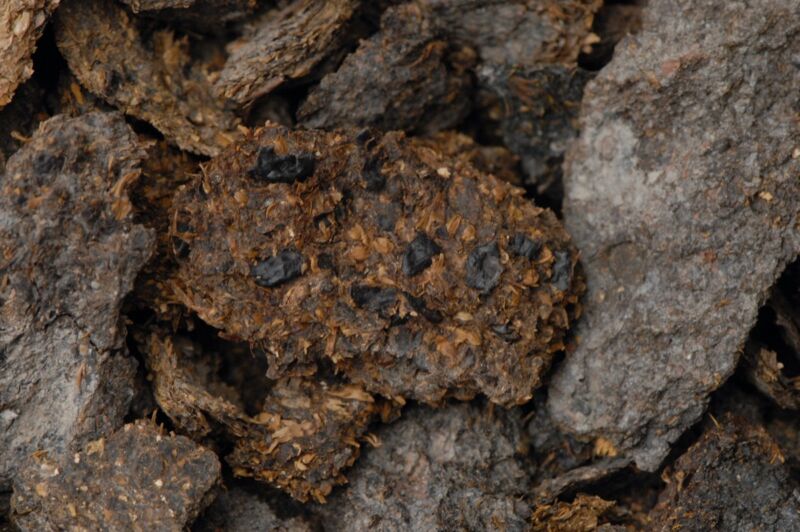The proof’s in the poop: Austrians have loved beer, blue cheese for 2,700 years

Enlarge / A 2,700-year-old piece of human excrement found at the Hallstatt salt mines, in which beans, millet, and barley are clearly visible (assuming one wishes to look that closely).
Ancient Iron Age miners in what is now Austria were quite fond of beer and blue cheese, according to a new analysis, published in the journal Current Biology, of preserved paleo-poop. The researchers found evidence of two fungal species commonly used to produce blue cheese and beers, along with evidence that the miners' diet was particularly rich in carbohydrates in the form of cereal grains.
Genome-wide analysis indicates that both fungi were involved in food fermentation and provide the first molecular evidence for blue cheese and beer consumption during Iron Age Europe," said co-author Frank Maixner of the Eurac Research Institute for Mummy Studies in Bolzano, Italy. "The miners seem to have intentionally applied food fermentation technologies with microorganisms which are still nowadays used in the food industry."
For archaeologists keen on learning more about the health and diet of past populations-as well as how certain parasites evolved over the evolutionary history of the microbiome-preserved samples of ancient poo can be a veritable goldmine of information. Samples are usually found in dry caves, desert areas, frozen areas, or waterlogged environments (like bogs), according to Maixner and his co-authors, where desiccation, freezing, and similar processes preserve the fecal matter for posterity.
Read 11 remaining paragraphs | Comments